J
John McIlroy
Guest
Lotus has teased the cabin of the Emira - its next sports car. The newcomer will make its debut on 6 July at this year’s Goodwood Festival of Speed, and while Lotus hasn’t served up a glimpse of the exterior, it has given us a look inside.
The Emira’s steering wheel is trimmed in Alcantara and has a capacitive trackpad to control the menus on the digital instrument panel. The digital dash will also have a G-meter and different colour schemes for the car’s two main driving modes, glowing white when in comfort-biased “Tour” mode and red for the track-focussed “Sport” setting.
Lotus has loosely labelled the Emira as the spiritual successor to the famed Esprit. It’ll also usher in a major technology and product push, which will see the company triple production within the next two years and expand into further niches, including “lifestyle” vehicles, by the latter half of the decade.
The Emira will be offered with a choice of two powertrains, including a “small-capacity, high-output” petrol engine sourced from outside the Geely Auto Group, which currently owns the Lotus brand.
The company’s recently appointed CEO, Matt Windle, has confirmed to Auto Express that the engine partnership is an entirely new one for Lotus, and that the combustion motor destined for use in the Emira will be an inline four-cylinder unit.
We’re still waiting on performance specs, as well as details on the car’s driveline. However, as the steering wheel in Lotus’s latest teaser image is fitted with paddle shifters, confirming an automatic transmission at the very least.
The combustion-engined solution will be the last of its kind in a Lotus model, because all of the brand’s plans beyond Emira focus on pure-electric vehicles. Windle said: “Emira is one last hurrah for the petrol engine. It’s the bridging car that takes us from the old to the new.
“We’re signing off from the combustion era with a fantastic car that really is the most accomplished Lotus we’ve ever made. It mixes technology, performance, usability and a beautiful appearance; I really think people will be quite surprised by this car.”
Our exclusive images show how the Emira (codenamed Type 131) could look when it arrives this summer. The car’s design is said to be a more affordable evolution of the themes that were introduced on Lotus’s all-electric hypercar, the Evija. And this may extend to further use of what the brand’s chief designer, Russell Carr, calls “porosity” – the through-ducts in the bodywork that channel air, particularly at the rear.
“There is essence of Evija in Emira,” Carr told us. “We’re talking about a very different price point, a different architecture. But we certainly think of those philosophies of design – making the car look aerodynamic and lightweight, making it function aerodynamically, making it look agile. We’ve drawn on inspiration from Evija.”
The Emira will sit on a new platform known internally as Elemental, but labelled “Sports Car Architecture” in external communications. The new platform uses Lotus’s renowned extruded aluminium technology, but the firm describes the chassis as “a massive step-change technically.”
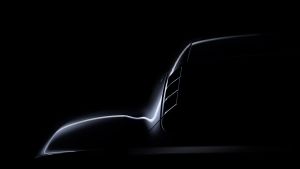
Lotus Emira teasers - rear
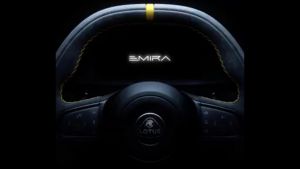
Lotus Emira wheel
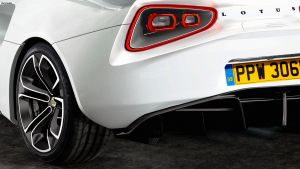
Lotus Type 131 - rear detail (watermarked)

Future Lotus range
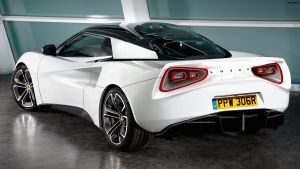
Lotus Type 131 - rear (watermarked)
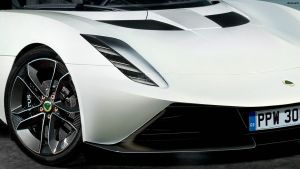
Lotus Type 131 - front detail (watermarked)
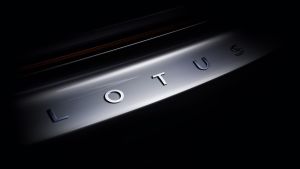
Lotus Emira teasers - sill
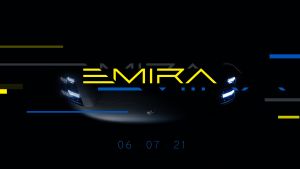
Lotus Emira teasers
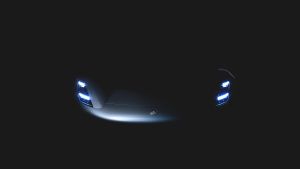
Lotus Emira teasers
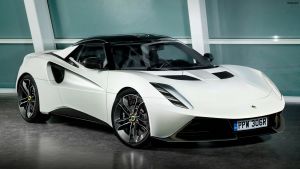
Lotus Type 131 - front (watermarked)
It’s one of four new platforms the firm has in development, the other three are electric platforms supporting hypercars like the Evija, new sports cars, such as the next-generation Alpine A110, and what Lotus calls “lifestyle” models, which will more than likely be SUVs.
With the Emira, Lotus bosses have promised that they will “stay true” to the company’s enthusiast base and price positioning, which is no great surprise, given that the Emira needs to carry the torch of the brand’s three recently axed sports cars: the Elise, Exige and Evora.
Speaking to Auto Express last year, Uday Senapati, Lotus’s Executive Director of Corporate Strategy and Product Management, said that although there is no immediate plan to replace these cars, the company does not envisage any major deviation from its current pricing structure – broadly speaking, between around £60,000 and £100,000.
“I can't share with you all what the future holds but for now, we've taken the difficult decision to axe it [the Elise],” Senapati said. “We’re not about to say we’re going to bring it back, either. You never know, but currently the decision is to stop it.
“However, we’ve had a great fan base and customer base over the 73 years of Lotus history; we have 100,000 cars out there. We’re not going to ditch those customers and those values. We’ll stick to who we are.
“The DNA doesn’t go away. And the price points will be similar, even when we’re talking about pure-electric cars. That, you can imagine, is a massive challenge, but we will be in the price points where people would like to see us. And higher as well.”
Click here to read more about the new Lotus Evija hypercar...
Continue reading...
The Emira’s steering wheel is trimmed in Alcantara and has a capacitive trackpad to control the menus on the digital instrument panel. The digital dash will also have a G-meter and different colour schemes for the car’s two main driving modes, glowing white when in comfort-biased “Tour” mode and red for the track-focussed “Sport” setting.
- SEE MORE Best sports cars 2021
Lotus has loosely labelled the Emira as the spiritual successor to the famed Esprit. It’ll also usher in a major technology and product push, which will see the company triple production within the next two years and expand into further niches, including “lifestyle” vehicles, by the latter half of the decade.
The Emira will be offered with a choice of two powertrains, including a “small-capacity, high-output” petrol engine sourced from outside the Geely Auto Group, which currently owns the Lotus brand.
The company’s recently appointed CEO, Matt Windle, has confirmed to Auto Express that the engine partnership is an entirely new one for Lotus, and that the combustion motor destined for use in the Emira will be an inline four-cylinder unit.
We’re still waiting on performance specs, as well as details on the car’s driveline. However, as the steering wheel in Lotus’s latest teaser image is fitted with paddle shifters, confirming an automatic transmission at the very least.
The combustion-engined solution will be the last of its kind in a Lotus model, because all of the brand’s plans beyond Emira focus on pure-electric vehicles. Windle said: “Emira is one last hurrah for the petrol engine. It’s the bridging car that takes us from the old to the new.
“We’re signing off from the combustion era with a fantastic car that really is the most accomplished Lotus we’ve ever made. It mixes technology, performance, usability and a beautiful appearance; I really think people will be quite surprised by this car.”
Our exclusive images show how the Emira (codenamed Type 131) could look when it arrives this summer. The car’s design is said to be a more affordable evolution of the themes that were introduced on Lotus’s all-electric hypercar, the Evija. And this may extend to further use of what the brand’s chief designer, Russell Carr, calls “porosity” – the through-ducts in the bodywork that channel air, particularly at the rear.
“There is essence of Evija in Emira,” Carr told us. “We’re talking about a very different price point, a different architecture. But we certainly think of those philosophies of design – making the car look aerodynamic and lightweight, making it function aerodynamically, making it look agile. We’ve drawn on inspiration from Evija.”
The Emira will sit on a new platform known internally as Elemental, but labelled “Sports Car Architecture” in external communications. The new platform uses Lotus’s renowned extruded aluminium technology, but the firm describes the chassis as “a massive step-change technically.”

Lotus Emira teasers - rear

Lotus Emira wheel

Lotus Type 131 - rear detail (watermarked)

Future Lotus range

Lotus Type 131 - rear (watermarked)

Lotus Type 131 - front detail (watermarked)

Lotus Emira teasers - sill

Lotus Emira teasers

Lotus Emira teasers

Lotus Type 131 - front (watermarked)
It’s one of four new platforms the firm has in development, the other three are electric platforms supporting hypercars like the Evija, new sports cars, such as the next-generation Alpine A110, and what Lotus calls “lifestyle” models, which will more than likely be SUVs.
With the Emira, Lotus bosses have promised that they will “stay true” to the company’s enthusiast base and price positioning, which is no great surprise, given that the Emira needs to carry the torch of the brand’s three recently axed sports cars: the Elise, Exige and Evora.
Speaking to Auto Express last year, Uday Senapati, Lotus’s Executive Director of Corporate Strategy and Product Management, said that although there is no immediate plan to replace these cars, the company does not envisage any major deviation from its current pricing structure – broadly speaking, between around £60,000 and £100,000.
“I can't share with you all what the future holds but for now, we've taken the difficult decision to axe it [the Elise],” Senapati said. “We’re not about to say we’re going to bring it back, either. You never know, but currently the decision is to stop it.
“However, we’ve had a great fan base and customer base over the 73 years of Lotus history; we have 100,000 cars out there. We’re not going to ditch those customers and those values. We’ll stick to who we are.
“The DNA doesn’t go away. And the price points will be similar, even when we’re talking about pure-electric cars. That, you can imagine, is a massive challenge, but we will be in the price points where people would like to see us. And higher as well.”
Click here to read more about the new Lotus Evija hypercar...
Continue reading...
